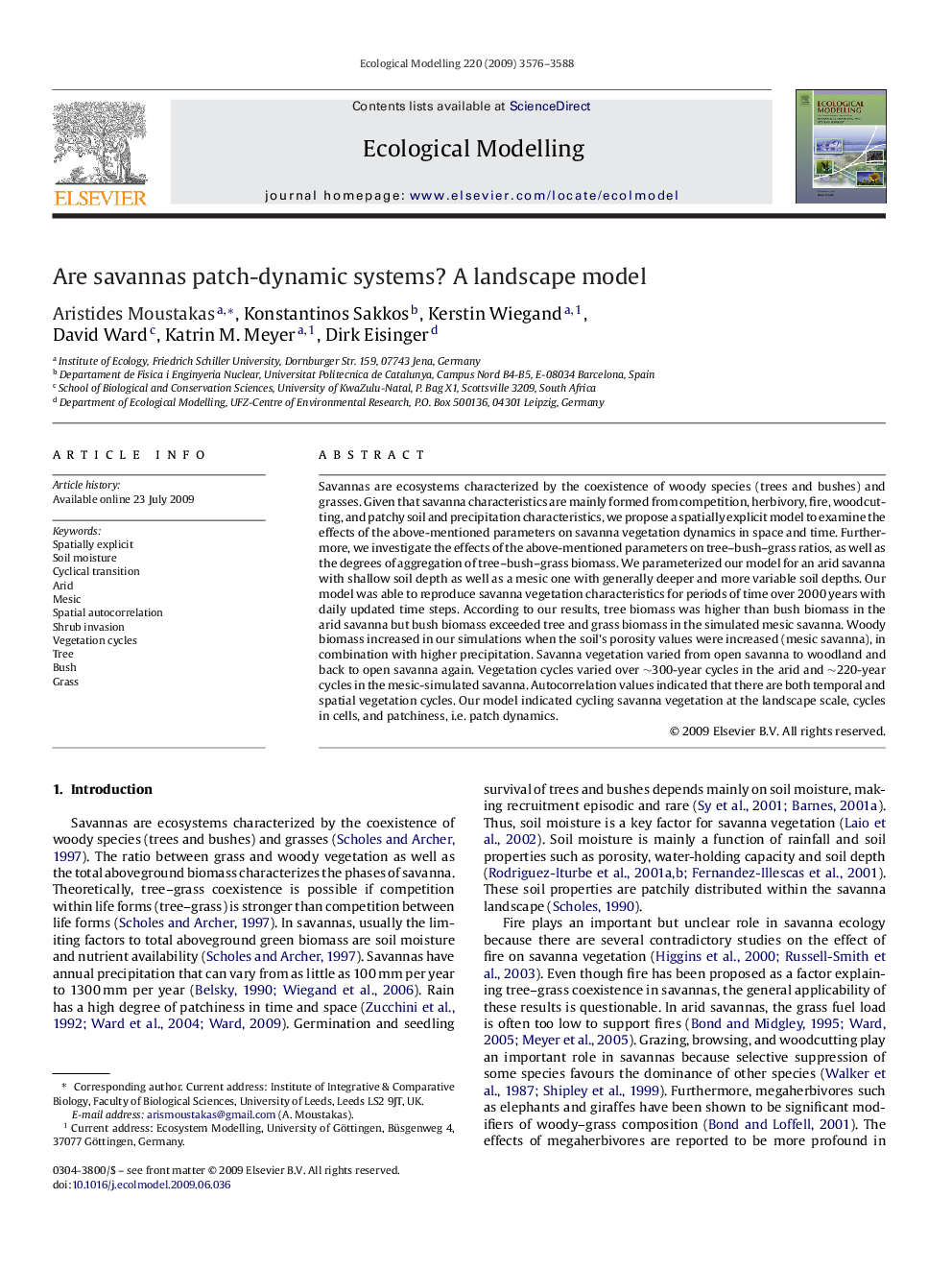| Article ID | Journal | Published Year | Pages | File Type |
|---|---|---|---|---|
| 4377514 | Ecological Modelling | 2009 | 13 Pages |
Abstract
Savannas are ecosystems characterized by the coexistence of woody species (trees and bushes) and grasses. Given that savanna characteristics are mainly formed from competition, herbivory, fire, woodcutting, and patchy soil and precipitation characteristics, we propose a spatially explicit model to examine the effects of the above-mentioned parameters on savanna vegetation dynamics in space and time. Furthermore, we investigate the effects of the above-mentioned parameters on tree-bush-grass ratios, as well as the degrees of aggregation of tree-bush-grass biomass. We parameterized our model for an arid savanna with shallow soil depth as well as a mesic one with generally deeper and more variable soil depths. Our model was able to reproduce savanna vegetation characteristics for periods of time over 2000 years with daily updated time steps. According to our results, tree biomass was higher than bush biomass in the arid savanna but bush biomass exceeded tree and grass biomass in the simulated mesic savanna. Woody biomass increased in our simulations when the soil's porosity values were increased (mesic savanna), in combination with higher precipitation. Savanna vegetation varied from open savanna to woodland and back to open savanna again. Vegetation cycles varied over â¼300-year cycles in the arid and â¼220-year cycles in the mesic-simulated savanna. Autocorrelation values indicated that there are both temporal and spatial vegetation cycles. Our model indicated cycling savanna vegetation at the landscape scale, cycles in cells, and patchiness, i.e. patch dynamics.
Related Topics
Life Sciences
Agricultural and Biological Sciences
Ecology, Evolution, Behavior and Systematics
Authors
Aristides Moustakas, Konstantinos Sakkos, Kerstin Wiegand, David Ward, Katrin M. Meyer, Dirk Eisinger,
